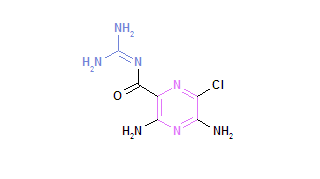(CHEST 1998; 114:69S-70S)
The [Na.sup.+]/[H.sup.+] exchange regulation of intracellular pH may play a permissive role in pulmonary artery smooth muscle cell (PASMC) proliferation that occurs in hypoxia-induced pulmonary hypertension. Previously, this laboratory has demonstrated that dimethyl amiloride (DMA), an amiloride derivative with enhanced potency and selectivity as an inhibitor of the [Na.sup.+]/[H.sup.+] antiporter, can inhibit bovine PASMC proliferation stimulated by platelet-derived growth factor. In this study we studied whether DMA can inhibit hypoxic pulmonary hypertension in vivo as well. We hypothesized that DMA inhibits development of hypoxic pulmonary hypertension by interfering with PASMC growth. Sprague-Dawley rats were exposed to 10.5% [O.sub.2] for 14 days and were divided into three groups: hypoxia-DMA (n = 14, receiving DMA 3 mg/kg/day for 14 days intravenously through osmotic minipump), hypoxia-control (n=10), and normoxia-control (n=6). At the end of the DMA or saline treatment, hemodynamics, blood gas, and hematocrit were measured in anesthetized animals breathing room air to reverse any acute hypoxic vasoconstriction (Table 1).
(*) All data are shown are mean [+ or -] SE. Ppa=pulmonary-arterial pressure; CI=cardiac index; TPVRI=total pulmonary vascular resistance index (Ppa/CI); RV/LV+ S = right ventricle/left ventricle+septum; wall thickness refers to the terminal bronchiole; and thick vessels refers to intra-acinar vessels.
([dagger]) p<0.05, in comparison with normoxia-control group.
(double dagger]) p<0.05, in comparison with hypoxia-control group.
In conclusion, in spite of the hypertensive effects of polycythemia, DMA can significantly reduce pulmonary hypertension, fight ventricular hypertrophy, and vascular remodeling induced by chronic hypoxia.
(*) From the Pulmonary/Critical Care Unit Massachusetts General Hospital and Harvard Medical School, Boston. Supported by NIH Grant HL-39150.
COPYRIGHT 1998 American College of Chest Physicians
COPYRIGHT 2000 Gale Group



